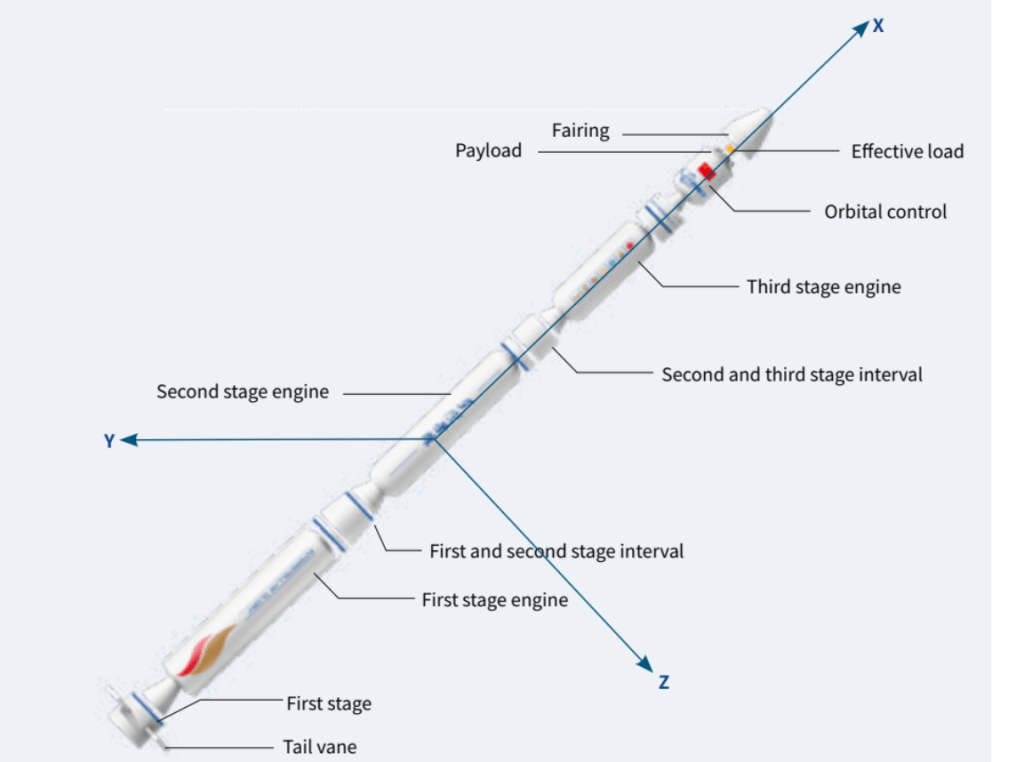Lift Off Time | February 1st, 2021 – 06:00 UTC | 14:00 BJT |
|---|---|
Mission Name | Hyperbola 1 (SQX-1) |
Launch Provider | i-Space (Chinese company) Not to be confused with ispace (Japanese company) |
Customer | i-Space |
Rocket | Hyperbola-1 (aka Shuang Quxian-1, SQX-1) |
Launch Location | Jiuquan Satellite Launch Center |
Payload mass | Unknown, up to 280 kg (620 lbs) |
Where did the satellites go? | They were destroyed upon the failure of the launch vehicle. |
Did they recover the first stage? | No, this is not a capability of i-Space. |
Where did the first stage land? | It exploded over the Inner Mongolia skies. |
Did they recover the fairings? | No, the launch vehicle encountered a failure. This is also not a capability of i-Space. |
Were these fairings new? | Yes. |
How was the weather? | N/A |
This was the: | – 2nd orbital launch attempt of the Hyperbola-1 launch vehicle – 1st orbital launch attempt of the Hyperbola-1 V2.0 launch vehicle – 3rd Chinese launch in 2021 |
Where to watch | No live stream was provided. |
How did it go?
The private Chinese spaceflight company i-Space unexpectedly encountered a launch failure of their Hyperbola-1 (SQX-1) rocket on February 1st, 2021. Estimates showed that i-Space would be attempting to launch in late February, but instead they decided to go much earlier.
Shortly after launch, a mechanical failure resulted in a total loss of the vehicle. This was only the second attempt of getting Hyperbola 1 (an all solid fueled rocket) into orbit. Images and inside sources indicate that the failure was caused by a loss of a grid fin at the bottom of the rocket around the Max-Q phase of flight, the section of flight where the most aerodynamic stress is experienced by the launch vehicle. This caused the rocket to tumble and the fairing to detach from the top, followed by the destruction of the launch vehicle.

What was on Hyperbola 1?
There is a large amount of confusion surrounding what actually was on the failed Hyperbola-1 rocket. Originally, the payload was thought to be the Ark-2 satellite from Beijing Space Ark Technologies, but that was later debunked just days after the failure and proved to have launched on Galactic Energy’s Ceres-1 rocket on November 11, 2020.
Later speculations on Twitter indicated that the payload could have either been (a) mass simulator(s), 6 unknown satellites or a combination of both. Andrew Jones confirmed on Twitter that all 6 payloads were lost.
What is the Hyperbola-1 rocket?
Hyperbola-1 (SQX-1) is i-Space’s first orbital class rocket consisting of three stages with a fourth stage for orbital attitude control. An aspect of Hyperbola 1, not seen on most orbital class rockets, is the use of solid rocket motors for all three stages. This means that there is no way to shut down any of the stages once they are lit.

Some sources have claimed that the first orbital Hyperbola-1 rocket was different than the second. The first Hyperbola-1 launch vehicle consisted of parts and design methods partially based off of CASC technology. i-Space then decided to move away from the CASC to become more independent. Sources state that almost the entire rocket was changed except for the control systems such as the grid fins on the bottom of the first stage and the Reaction Control System (RCS). Flight 1 also included a liquid fuel powered fourth stage (CASC technology, because i-Space does not yet have an operational liquid fueled first stage) accompanied by 3 other solid stages. Flight 2 included all solid stages as previously described.
The first version of the Hyperbola 1 rocket measured a total of 20.8 meters (68 ft) while the V2.0 totals 24 meters (78 ft). However, the payload users guide provided by i-Space lists the height at “about 21 meters”. Hyperbola 1 has the capability to send up to 280 kg (620 lbs) into a 300 km (186 mile) Low Earth Orbit (LEO).
Future Rockets
Already in development, Hyperbola 2 is slated to have a reusable first stage. They already have the JD-1 engine in development which completed a 500 second hot fire and gimbal test in November. i-Space aims to test a reusable hopper stage and have an orbital flight test in the works for late 2021 or early 2022.






“It will not come online or even been tested in the next few years due to the fact that i-Space currently does not have a liquid-fueled rocket engine. It is unknown whether one is in development or not.”
This is false. They’ve been developing the methalox JD-1 for a while now and completed a 500s hotfire back in November. They plan to build and fly a hopper for the first stage this year with an orbital test flight planned for NET end of 2021, though this is liable to slip to 2022 imo.
https://twitter.com/AJ_FI/status/1326663842718474240
https://spacenews.com/chinas-ispace-advances-with-ipo-plans-reusable-launcher-landing-leg-tests/
Thank you for the correction. It has been changed.
Correction, it is the 3rd Chinese launch for 2021, not 2020.
Thank you for the correction.
How many peeps died?